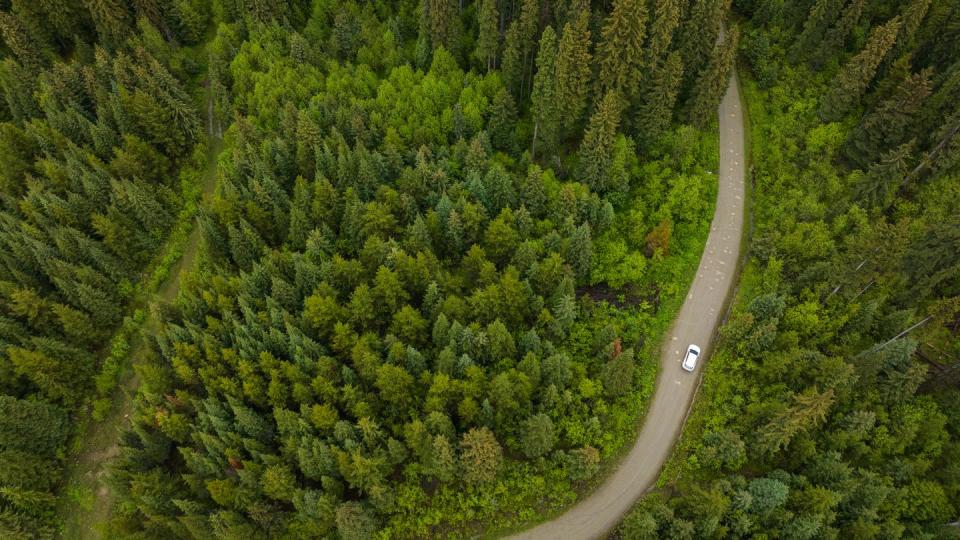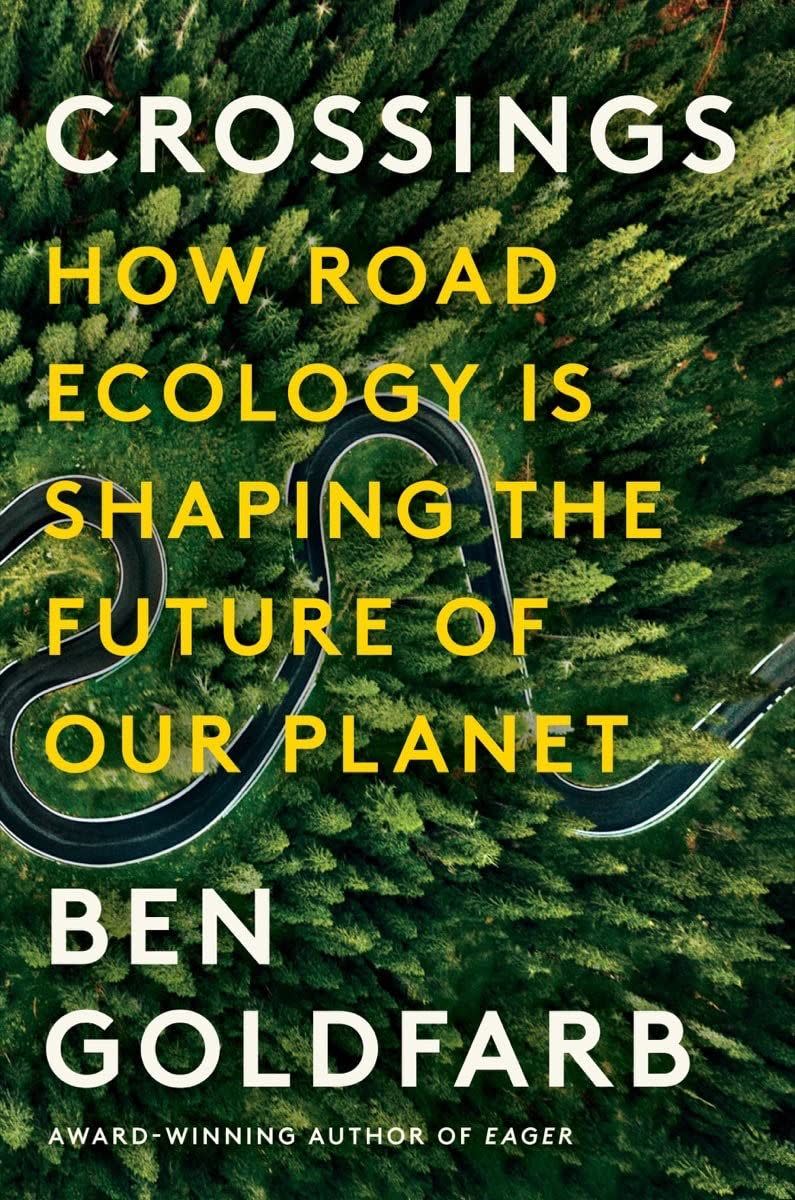'Crossings' Looks at How Roads (and the Cars on Them) Impact the Natural World

"Hearst Magazines and Yahoo may earn commission or revenue on some items through these links."
Ten years ago, environmental journalist Ben Goldfarb was in Montana writing about wildlife conservation. During this visit, an interview subject gave him a tour of some new animal crossing structures that had been built above and below a highway near Missoula, to facilitate the safe passage of elk, bear, moose, and other animals. Goldfarb knew of some key ways in which our built environment acts as a hindrance, or death sentence, for animals, so these new bridges and tunnels intrigued him.

Crossings: How Road Ecology Is Shaping the Future of Our Planet
amazon.com
$27.00
"I found it really beautiful that we would go to all of that effort, and spend all that money, to build the infrastructure for wild animals. I just liked the idea that infrastructure can be a form of ecological empathy," he tells Car and Driver. "And I was also just fascinated by the intellectual challenge of it. For wild animals, human infrastructure is all these strange, alien, disruptive forms. So how do you build a bridge that is enticing to not only the entire suite of animals in that ecosystem, but what design elements and criteria are necessary to get creatures to use human-built structures?"
This interest became Goldfarb’s next large-scale writing project, and the resulting book, Crossings: How Road Ecology Is Shaping the Future of Our Planet, has just been published (W.W. Norton and Company, $30). Through expert interviews, compelling research and analysis, and dogged experiential reporting, Goldfarb brings to life some of the core impacts our 40 million miles of roads have had, and are having, on the natural world and the creatures that inhabit it.
Core among these is impact itself, collisions with vehicles resulting in injury and death. These points of contact are dangerous not only for the animals struck, but for scavengers who subsequently feed on them. (One expert described the knock-on effect here to us as "like laying out a smorgasbord, and then killing everybody who shows up.") They're also dangerous, and expensive, to humans. "Between 200 and 400 drivers are killed in deer collisions every year," Goldfarb says. "And large-animal crashes—not only deer, but also elk and moose and bears—cost society something like $8 billion a year."
But there is also a range of other issues caused by roadways. "Noise pollution tremendously impacts ecosystems," Goldfarb says. "There's road salt, which is sort of transforming water bodies around the country—something like half of the lakes in the Midwest are undergoing long-term salinization and becoming brackish because all of this road salt is running off our highways into the environment. And there's the barrier effect, this steady stream of traffic that prevents animals from migrating all together and finding habitats."
As an example of the latter, he discusses I-80 in Colorado, where herds of mule deer and elk and antelope and pronghorn sheep have to migrate across the landscape seasonally to their lower-elevation, snow-free winter feeding grounds. "And, when a big highway like I-80 prevents them from getting where they need to go, they can truly starve because they're all standing by the side of an interstate, waiting for the break in traffic that never comes."
The interaction between animals and roadways is not all Godotian ennui and Craven horror. Roadways also offer some interesting opportunities. In the Midwest, where much of the land area now is either developed or planted in monocultures of soybean and corn, he points out that some of the last strips of native prairie are along roadsides. "Those roadsides are some of the last resources or strips of habitat that insects like monarch butterflies have available to them," he says. Sadly, it's also a dangerous place for any animal to live. He adds, "Lots of monarch butterflies get hit." (So maybe it is all ennui and horror.)
We Can Fix a Lot of This
As someone who self-describes as loving "driving, and road trips, and passing through the landscape," Goldfarb's goal is not to shame individual drivers or disgrace the idea of roads. Rather, he wants to call attention to their impact and consider remediation. Human-engineered wildlife crossings, like the one that first drew his attention to the subject, are one of the bright spots in this respect.
"There's a big body of literature showing that 90 percent or so is a pretty typical roadkill reduction when these crossings are built," he says. This has a human benefit as well. "If you can build a wildlife crossing that works, you can actually save the public a lot of money," Goldfarb adds. "In fact, there's lots of research out there showing that some of these wildlife crossings in high collision areas pay for themselves in less than a decade."
Goldfarb is also delightfully honest about his own personal experiences with, and impact upon, the environment when reporting the book. "I spent a few days driving around Alaska and one evening I pulled over and I found a yellow warbler, which is this beautiful little songbird that I just love, wedged in my in grille," he says. "I committed some roadkill while I was driving around researching and writing about its prevention."
You Might Also Like

 Yahoo Autos
Yahoo Autos 